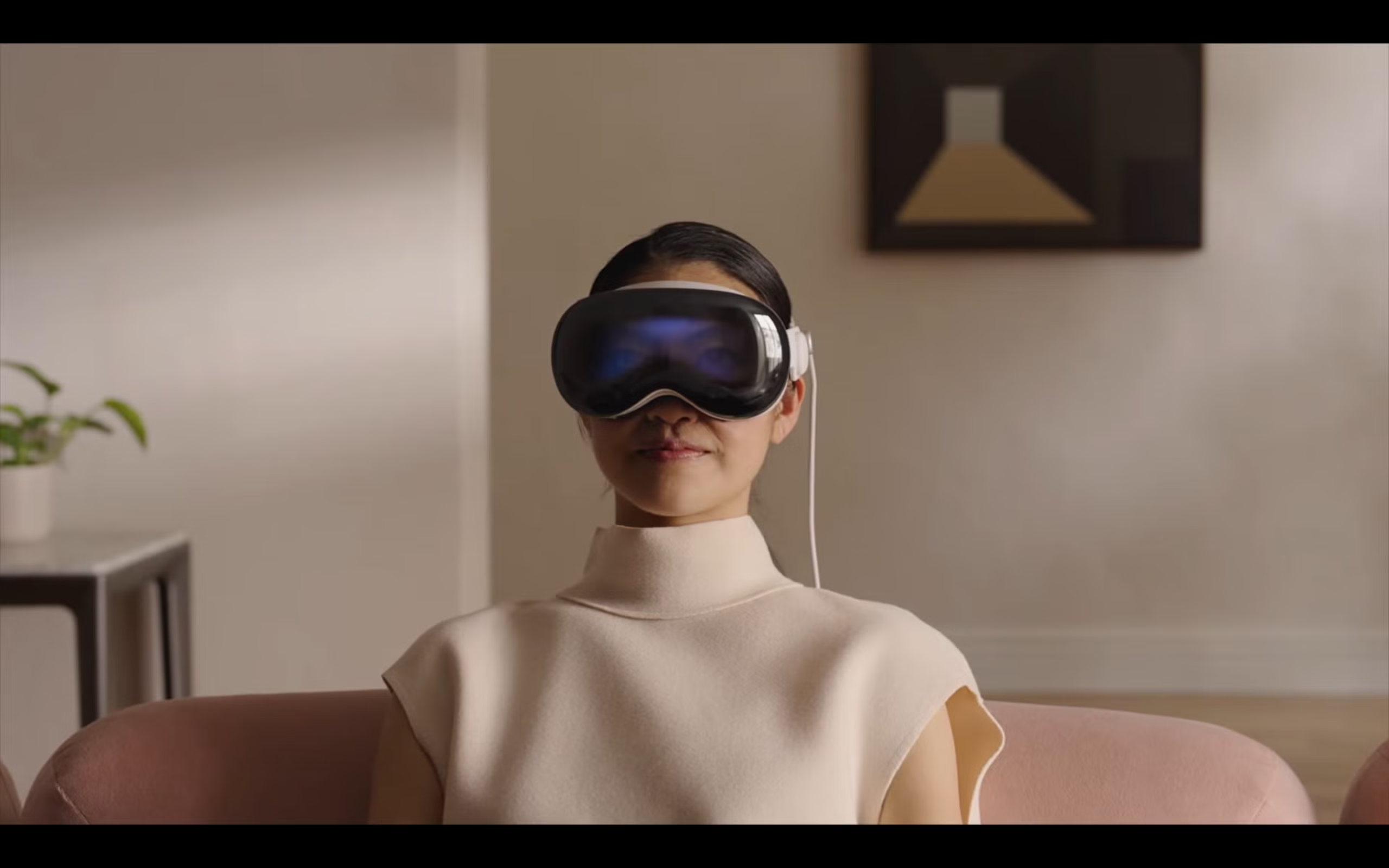Explore How Apple’s Spatial Vision Redefines Human-Computer Interaction
The world of technology is buzzing with excitement about Apple’s Vision Pro. This headset doesn’t just promise a new way to interact with information; it may mark the beginning of a completely new era in how we work, play, and connect. But does it truly live up to the hype, and is it really the future of computing? Let’s dive deep into what Apple Vision Pro offers, how it transforms digital experiences with spatial computing, and what that means for our shared future.
Introduction: The Dawning Age of Spatial Computing
Imagine blending your physical world with immersive digital experiences—where screens float before your eyes and applications respond intuitively to your gaze, gestures, and even your voice. That’s the promise of Apple’s Vision Pro, heralded as the world’s first spatial computer. It’s not just a virtual reality headset—Apple envisions it as a platform that fuses the capabilities of a computer, display, camera, and personal assistant into one seamless device.
With Vision Pro’s arrival, the boundaries between the digital and real world have started to fade. But does this blend represent a true leap toward the future of computing? Let’s explore why Apple’s latest innovation has captured the attention of tech enthusiasts, creative professionals, and everyday users alike.
The Core of Apple Vision Pro: Features That Set It Apart
Immersive Display and Spatial Audio
At the heart of Vision Pro lies a pair of micro-OLED displays, packing an astounding 23 million pixels—more than a 4K TV for each eye. Colors are vivid, details are razor-sharp, and everything you see appears anchored in your real environment. Paired with Apple’s latest spatial audio system, sounds seem to originate from the world around you, making digital content feel truly present.
Natural, Intuitive Controls
Forget remote controls or clunky buttons. Vision Pro responds to where you look, the gesture of your hands, and the sound of your voice. Navigation is as simple as glancing at an icon to select it, tapping fingers to confirm, or asking Siri for help. This level of intuitive interaction makes computing feel effortless and exhilarating, even for those new to augmented or virtual reality.
Power Under the Hood
Apple didn’t hold back on performance. Vision Pro features a dual-chip architecture with the robust M2 chip and a purpose-built R1 chip. Together, they guarantee ultra-smooth graphics, fast response times, and real-time processing of the myriad cameras and sensors. The result is an almost lag-free experience—essential for true immersion.
Cameras and Sensors: Bridging Worlds
With 12 cameras, five sensors, and six microphones, Vision Pro understands your surroundings and seamlessly blends digital objects into your real space. Its LiDAR scanner, for instance, accurately maps your room, making virtual screens or interactive 3D objects appear as if they’re really there. The device also features a revolutionary authentication method called Optic ID, which unlocks the headset using the unique pattern of your iris, ensuring security and privacy.
visionOS: The Operating System for Spatial Computing
Any revolutionary hardware needs software to match. Apple’s visionOS is custom-built for spatial interaction. Its interface floats in your environment, allowing multiple apps to run side by side at any scale. You can set up massive workspaces, drag files around with a wave, or experience movies as if sitting in your own personal theater.
visionOS also supports seamless integration with familiar Apple devices. Open your MacBook nearby, and its display can instantly transform into a giant, private virtual screen inside Vision Pro—no wires required.
Experiences That Change How We Work and Play
Productivity: Redefining Workspaces
With Vision Pro, you’re no longer limited to flat screens. Your home office can expand into an infinite virtual workspace, with apps, browsers, and documents floating wherever you want them. This flexibility boosts productivity, focus, and creativity, whether you’re designing in 3D, editing video, or analyzing data.
Collaborative tools like FaceTime also get a major upgrade: video calls become immersive, life-sized experiences where you feel as if colleagues are sharing your space. Apple’s Persona feature even creates a realistic digital avatar for natural virtual meetings.
Entertainment: Bringing Content to Life
Watching movies or sports on Vision Pro feels cinematic. The visuals envelop you, and spatial audio pulls you into the story. Whether you’re binging the latest series, exploring 3D travel destinations, or playing AR and VR games, the experience is far beyond conventional screens.
Apple has already partnered with major studios like Disney to bring exclusive, interactive content to the platform—signals that media is being reimagined for spatial computing.
Creativity and Gaming: New Frontiers
Artists, designers, and developers now have an entirely new canvas. Imagine sculpting 3D objects in mid-air, orchestrating music with a sweep of your hand, or building virtual worlds that mix with your environment. The possibilities ignite creativity, while new games and interactive adventures make full use of spatial and hand-tracking technologies.
The Challenges and Limitations
While Apple Vision Pro represents the cutting edge, it isn’t perfect. The device remains bulky compared to traditional eyewear, and its weight can impact comfort with long-term use. Battery life also remains relatively short—at about two hours of untethered usage. Furthermore, at a premium price point, Vision Pro remains out of reach for many consumers, limiting its early adoption largely to tech enthusiasts and professionals.
Some reviewers also note the field of view is smaller than competing headsets, and pass-through video still falls short of seeing the world directly through your eyes, especially in dim lighting. As with any first-generation technology, future versions will likely address many of these issues.
Is Vision Pro Truly the Next Leap in Computing?
Apple’s Vision for the Future
Apple positions Vision Pro as more than a VR headset—it’s a paradigm shift. By merging physical and digital spaces, Vision Pro creates experiences that transcend what today’s computers can offer. Tasks that once required multiple monitors or specialized hardware now happen effortlessly in 3D space.
Vision Pro’s immersive work environments, natural controls, and seamless multi-device integration foreshadow a future where traditional computers and devices may be replaced—or at least complemented—by spatial computing.
Business and Industry Impact
In business, Vision Pro enables new ways to design, collaborate, and train. From architectural walkthroughs to remote assistance and interactive simulations, companies are already exploring how spatial computing can drive efficiency and creativity. Developers are actively building specialized applications, further accelerating innovation.
The Road Ahead: Trends and Predictions
While Vision Pro is an impressive beginning, the journey of spatial computing is just starting. As technology advances, headsets will likely become lighter, more affordable, and even more immersive. Apple’s commitment to privacy, accessibility, and developer support ensures that a rich ecosystem will grow around Vision Pro and its successors.
It’s not just a device—it’s the start of a broader shift. Tomorrow’s computers may be invisible and ever-present, responding intuitively to our intentions and woven into the fabric of our daily surroundings. Vision Pro hints at that incredible future.
Conclusion: Should You Believe the Hype?
Apple’s Vision Pro reimagines what a computer can be. It blends painlessly with your physical life, delivers astonishing display quality, and introduces ways to work and play that simply weren’t possible a few years ago. The path to mainstream adoption may be gradual—due to costs, comfort, and evolving content—but the foundations are in place for spatial computing to revolutionize our relationship with technology.
So, is Apple Vision Pro the future of computing? All signs point to yes. It’s not just a new device—it’s a glimpse of the interconnected, immersive, and human-centric digital world we’ve long awaited. The question is not if spatial computing will become the norm, but when.
Are you ready for the next evolution in computing? The future is no longer coming—it’s here.
Call to Action
Curious about how Vision Pro could transform your workflow or creativity? Stay up to date on the latest developments in spatial computing, and start imagining how this revolutionary technology could enhance your own digital life. Share your thoughts below and join the conversation about the next era of innovation!






